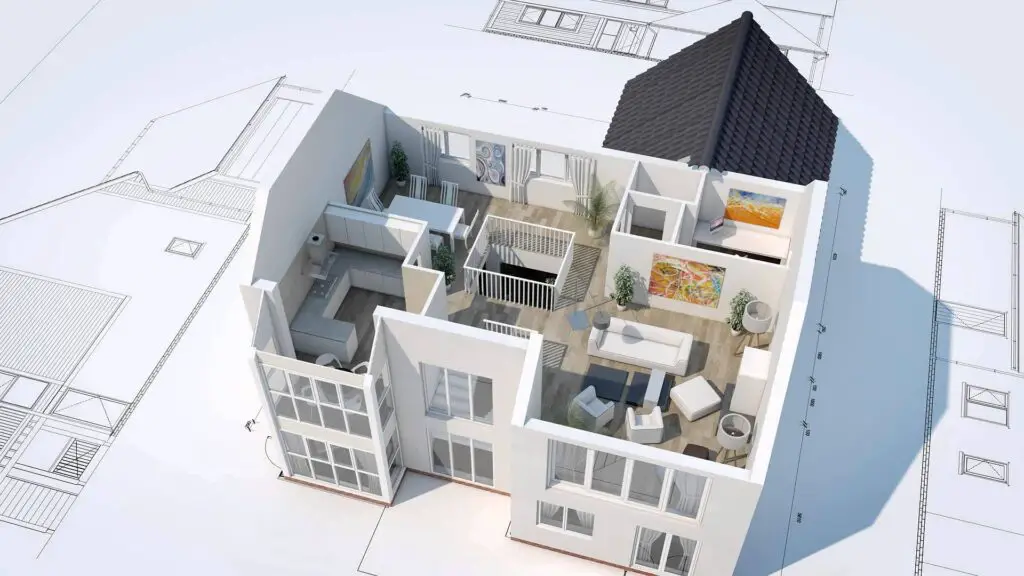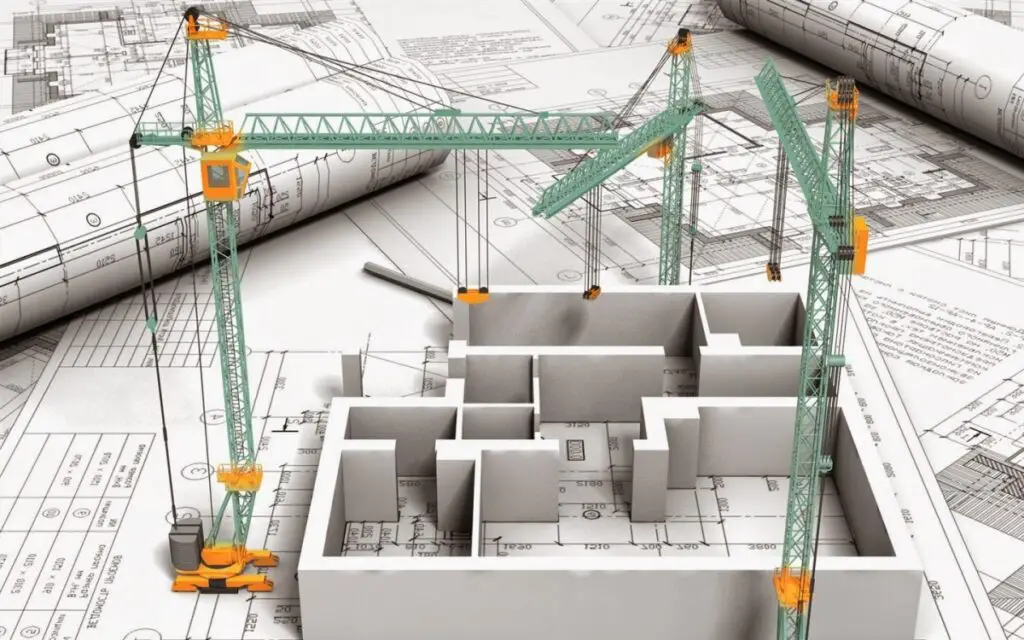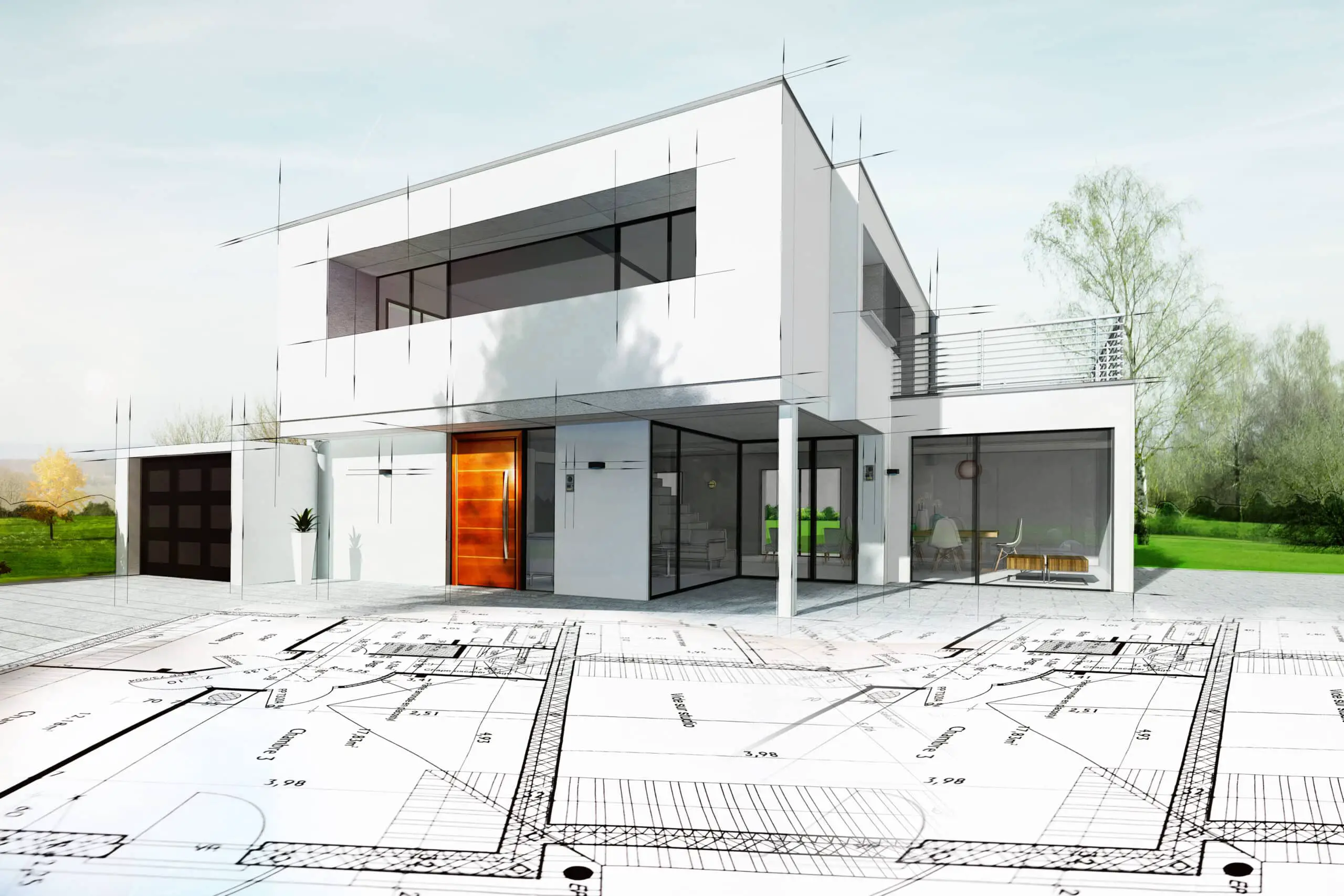How To Become An Architectural Designer
Introduction
How To Become An Architectural Designer: Becoming an architectural designer is an exciting and rewarding journey for those passionate about the intersection of creativity, functionality, and the built environment. Architectural designers play a crucial role in shaping the design and aesthetics of buildings and structures. They work closely with architects, clients, and other professionals to bring their vision to life.
If you aspire to become an architectural designer, there are several key steps to embark on this career path. First and foremost, obtaining a relevant education is essential. Pursuing a professional degree in architecture, such as a Bachelor of Architecture (B.Arch) or a Master of Architecture (M.Arch), provides a strong foundation of knowledge and skills in design, construction technology, and architectural theory.
Developing technical skills is equally important for architectural designers. Proficiency in computer-aided design (CAD) software, 3D modeling, and visualization tools is crucial for creating detailed and accurate representations of designs. Additionally, staying updated with building information modeling (BIM) software and other emerging technologies is beneficial.

What Do You Need To Become Architecture Designer?
Architectural Designer Requirements:
- Bachelor’s degree in architecture.
- A portfolio of completed designs.
- Excellent technical skills, particularly with CAD software.
- Strong creative design and time management skills.
- Good customer service, communication, and interpersonal skills.
- Good maths skills.
Architecture design is a rewarding vocation that involves a unique mix of talents, education, and experience. When building functional, appealing structures for clients, architects must consider safety, sustainability, and cultural context. Architecture designers must meet these criteria:
Education: The first step towards becoming an architecture designer is obtaining a relevant education. Most architecture firms demand B.Arch or M.Arch.Architectural design, construction technologies, building systems, architecture history, & design theory are covered.
Technical Skills: Architecture designers must possess strong technical skills to translate their creative ideas into tangible designs. CAD software lets architects draw, model, and simulate their designs.
Design and Creativity: A strong sense of design and creativity is crucial for architecture designers. They need to develop innovative and visually appealing designs that integrate functionality, aesthetics, and sustainability. This involves understanding design principles, spatial relationships, and the ability to envision the final outcome of a project.
Is Architecture And Design A Good Career?
A career as an architect can be an excellent choice for people who enjoy thinking creatively to develop new ideas. As architects gain experience in the field, they focus more on design work, which allows them to use their creativity to develop innovative architectural plans.
Architecture and design can indeed be a highly rewarding and fulfilling career path for those with a passion for creativity, problem-solving, and making a positive impact on the built environment. Here are several reasons why architecture and design can be a good career choice:
Creative Expression: Architecture and design offer abundant opportunities for creative expression. As an architect or designer, you may form spaces that improve lives, stir emotions, and inspire others. The process of conceiving innovative designs and seeing them come to life can be immensely satisfying.
Impactful Work: Architects and designers have the power to influence the physical environment in meaningful ways. They may create sustainable and energy-efficient structures, well-being and accessibility places, and reinvigorate communities via creative urban planning. The work of an architect or designer can have a lasting impact on individuals, society, and the environment.
Varied Career Paths: The field of architecture and design offers a wide range of career paths. There are many options for residential, commercial, interior, landscape, and urban planning. Architects and designers can work in private firms, government agencies, non-profit organizations, or even start their own practices.
Are Designers Paid More Than Architects?
Job Roles and Salaries of Architects and Interior Designers
The pay scale of an interior designer are higher than that of an architect because in the hierarchy, the interior designer ranks first. Design architects and mechanical and or naval architects work under designers
The salaries of designers and architects can vary depending on various factors such as location, experience, expertise, and the specific industry or sector in which they work. However, it is important to note that there is no definitive answer to whether designers are paid more than architects or vice versa, as compensation can vary significantly.
In some cases, designers may earn higher salaries compared to architects. This can be attributed to several factors. Designers that specialize in graphic, industrial, or web design may be in high demand & earn higher incomes. Due to the value of creative design in technology, advertising, and fashion, designers may be able to earn more.
On the other hand, architects can also earn competitive salaries, particularly as they gain experience and expertise. Architects need a professional degree, an internship, and licensing examinations. Architects can earn more with this education and experience. They work on huge projects, including commercial buildings, institutional structures, and urban planning, which might increase their pay.
How To Become An Architectural Designer?
How to become an architectural designer
- Earn a bachelor’s degree.
- Participate in an internship program.
- Take your final exam.
- Complete a postgraduate degree.
- Apply for an architect position.
- Consider a master’s degree.
- Residential architecture.
- Commercial architecture.
To become an architectural designer, you need a degree in architecture, engineering, or a related field. You also need experience in your desired area, and depending on where you work, you might have to earn a separate credential as an architect. Other qualifications can include familiarity with design and architecture programs, knowledge of specific architectural designs, and experience in related engineering or design roles. You can work for a design firm or studio, or work on your own if you build up a client base and portfolio.
Demands To Become An Architectural Designer
Becoming an architectural designer is an exciting career path that requires a combination of education, skills, and experience. Architectural designers are responsible for creating innovative and functional designs for buildings and structures. Here are the steps to becoming an architectural designer:
Obtain a Relevant Education: The first step towards becoming an architectural designer is to obtain a formal education in architecture. Most architectural firms require a B.Arch or M.Arch. Accredited programs should address design, construction technology, building systems, & architectural theory.
Gain Technical Skills: Architectural designers need to acquire technical skills to translate their design concepts into tangible representations. Designers need CAD software skills to create accurate drawings & 3D models. Additionally, knowledge of building information modeling (BIM) software, architectural rendering software, and structural analysis tools is beneficial.
Develop Design Abilities: Architectural designers should have a strong sense of design and aesthetics. Develop your design abilities by studying design principles, exploring various architectural styles, and analyzing successful architectural projects. Practice sketching, model making, and creating visual presentations to effectively communicate your design ideas.
What Is An Architectural Designer?
Architectural designers are typically entry-level employees at architectural firms. Like an architect, they design different types of structures, but—because they do not hold a professional certification—their designs must be signed off on by a supervising architect.
An architectural designer uses technology to create diagrams and plans for the creation of buildings and structures. Architectural design involves engineering, design, and architectural components to develop plans that are accurate. Builders and construction workers use those plans to erect buildings and other structures. Your responsibilities include drafting drawings and schematics for clients. Your duties also include researching laws and building codes so that your designs are safe and legal. You are responsible for performing calculations, collecting data, and making sure that the final product follows the client’s design preferences.
An architectural designer is a professional who specializes in creating innovative and functional designs for buildings and structures. They collaborate with architects, clients, and other stakeholders to create design concepts, visuals, and architectural planning.An architectural designer’s role is crucial in transforming architectural ideas into practical and visually appealing designs.
Architectural designers are skilled in both the artistic and technical aspects of design. They possess a strong sense of aesthetics, spatial awareness, and an understanding of design principles. They consider factors such as form, function, sustainability, and cultural context to create designs that meet the needs of the client while adhering to building codes and regulations.
Responsibilities Of An Architectural Designer
The responsibilities of an architectural designer can vary depending on the firm, project, and their level of experience. However, some common tasks and duties include:
Concept Development: Architectural designers collaborate with architects and clients to develop design concepts. They conduct research, gather information about the project requirements, and create initial design proposals. This involves sketching, creating 3D models, and utilizing computer-aided design (CAD) software to visualize the design concepts.
Detailed Design Development: Once a design concept is approved, architectural designers work on developing detailed designs. They create technical drawings, construction documents, and specifications that outline the dimensions, materials, and components of the design. They also consider factors such as building systems, structural integrity, and environmental sustainability during this stage.
Material Selection and Specifications: Architectural designers research and select appropriate materials, finishes, and fixtures for the design. They consider factors such as durability, aesthetics, cost, and sustainability. They also specify the installation and construction methods required for the chosen materials.

What Is The Scope Of Architectural Designer?
Architectural Designers plan and design the layouts for buildings and landscapes. They work under the direct supervision of licensed Architects and interact with clients to gather design requirements, specifications, and budgets for their building projects.
The scope of an architectural designer is broad and encompasses various aspects of the design and planning process in the field of architecture. The role of an architectural designer extends beyond simply creating aesthetically pleasing designs. Here are some key areas that define the scope of an architectural designer:
Design Development: Architectural designers are responsible for developing design concepts and translating them into detailed and functional designs. They consider factors such as spatial arrangement, material selection, sustainability, and cultural context to create designs that meet the needs and vision of the client. Architectural designers utilize their creativity and design skills to generate innovative and visually appealing solutions.
Technical Documentation: Architectural designers play a critical role in producing technical documentation for construction projects. They create detailed drawings, construction documents, and specifications that outline the dimensions, materials, and technical requirements of the design. These documents are crucial for contractors and builders to understand and execute the design accurately.
Collaboration and Communication: Architectural designers collaborate closely with architects, engineers, clients, and other stakeholders throughout the design process. They engage in effective communication to understand the needs and requirements of the project, address feedback, and incorporate necessary changes. Strong interpersonal and communication skills are essential for successful collaboration and coordination within multidisciplinary teams.
Is An Architect Different From A Designer?
Designers assist in designing the interior elements, like the flow of spaces, influencing style, and material selection, while using their skills to add aesthetic value. Whereas architects create detailed drawings of the structure, ensuring the building is up to the required codes.
The Difference Between Architect And Designers
Yes, an architect is different from a designer, although there can be some overlap in their roles and responsibilities. Here are some key distinctions between the two:
Education and Licensing: Architects typically undergo extensive education and training to obtain a professional degree in architecture, such as a Bachelor of Architecture (B.Arch) or a Master of Architecture (M.Arch). They are required to complete a period of internship and pass licensing exams to become licensed architects. On the other hand, designers may have formal education in design or a related field, but they are not necessarily required to hold specific licenses or certifications.
Scope of Work: Architects have a broader scope of work that includes both the artistic and technical aspects of designing and planning buildings and structures. They are responsible for creating overall design concepts, developing detailed drawings and specifications, and ensuring compliance with building codes and regulations. Architects have a deep understanding of architectural theory, construction methods, and project management. Designers, on the other hand, often focus on specific areas of design, such as graphic design, interior design, industrial design, or product design. Their work may be more specialized and focused on aesthetics, functionality, or branding.
Legal and Professional Responsibility: Architects have a higher level of legal and professional responsibility compared to designers. As licensed professionals, architects are legally accountable for the safety, integrity, and compliance of their designs. They must adhere to building codes, obtain necessary permits, and oversee the construction process to ensure the design is implemented correctly. Designers, while responsible for the quality of their work, may not have the same level of legal liability and accountability as architects.
What Does An Architectural Designer Do On A Resume?
Architectural design resume experience examples
Involved with the design and creation of revit drawings. Consult client to discuss and finalize proposals. Determine and document materials, colors, equipment, design, and cost estimates. Monitor construction work to ensure compliance to plan or blueprint.
When including information about an architectural designer on a resume, it is essential to highlight relevant skills, experience, and accomplishments that showcase your expertise in the field. Here are some key elements to include in an architectural designer’s resume:
Professional Summary or Objective: Begin your resume with a brief professional summary or objective statement that highlights your experience, qualifications, and career goals as an architectural designer. This section should provide a concise overview of your expertise and what you bring to the table as a professional.
Education and Certifications: Include your educational background, starting with your highest degree in architecture or a related field. Mention the name of the institution, the degree obtained, and the year of graduation. If you hold any certifications or have completed relevant professional development courses, list them in this section as well.
Skills: Create a dedicated section to highlight your technical and soft skills as an architectural designer. Include skills such as proficiency in CAD and BIM software, knowledge of building codes and regulations, 3D modeling, project management, and any other relevant skills that set you apart. Be specific and provide examples of how you have utilized these skills in previous projects.
What’s An Architectural Design?
Architectural design is a discipline that focuses on covering and meeting the needs and demands, to create living spaces, using certain tools and especially, creativity. Therefore, the aim is to combine the technological and the aesthetic, despite the general belief that architecture is only a technological task.
Architectural design refers to the process of creating and developing a conceptual, functional, and aesthetic plan for a building or structure. It encompasses the creation of innovative and visually appealing designs that meet the needs of the client while considering factors such as functionality, sustainability, and cultural context.
Architectural design involves a holistic approach that integrates various elements, including spatial organization, material selection, structural considerations, environmental impact, and user experience. The goal is to create spaces that are not only visually pleasing but also functional, safe, and sustainable.
The process of architectural design typically involves several stages:
Programming: This initial stage involves understanding the client’s requirements, project goals, and constraints. Architects gather information, conduct site analysis, and assess the project’s feasibility. They consider factors such as the purpose of the building, the desired spatial organization, budget, and any specific functional or aesthetic preferences.
Concept Development: Based on the project brief and analysis, architects develop design concepts. They generate ideas and explore various options to address the functional requirements, spatial relationships, and aesthetic considerations. Concepts are usually presented through sketches, diagrams, and 3D models to visualize the design intent.
Schematic Design: In this phase, the chosen design concept is further developed and refined. Architects create more detailed drawings and models to explore the spatial organization, scale, and overall form of the building. They consider factors such as circulation, natural light, ventilation, and the integration of building systems.

Conclusion
Becoming an architectural designer is an exciting and fulfilling journey that requires a combination of education, technical skills, design ability, practical experience, and continuous learning. By following a systematic approach and dedicating yourself to honing your skills, you can embark on a successful career as an architectural designer. Obtaining a relevant education, such as a professional degree in architecture, provides a strong foundation of knowledge and skills necessary for architectural design. Developing technical skills in CAD, 3D modeling, and visualization tools allows you to create precise and accurate representations of your designs.
Cultivating a strong sense of design and creativity is essential for architectural designers. Understanding design principles, exploring architectural styles, and developing your aesthetic eye will help you create innovative and visually appealing designs that meet clients’ needs. Gaining practical experience through internships or entry-level positions allows you to apply your knowledge and skills in real-world projects. This hands-on experience is invaluable in developing your understanding of the architectural design process and collaborating with other professionals.
Building a portfolio showcases your design projects and demonstrates your skills and creativity to potential employers. A well-curated portfolio with a diverse range of projects highlights your expertise and sets you apart in the competitive job market. With dedication, passion, and perseverance, you can embark on a fulfilling and successful career as an architectural designer, contributing to the creation of innovative and impactful designs that shape the built environment.








